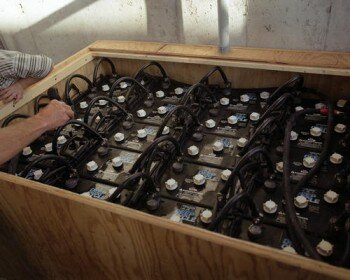
The MySolarPlans program is one of the latest Do It Yourself (DIY) home solar power system guide available on the web. When I first saw its main web site at www.mysolarplans.com, it was pretty unique because instead of using a long sale letter explaining the guide just like everyone else, they used a simple video presentation. Pretty clever!
I decided to buy the package and do a quick My Solar Plans review for the benefit all the readers. The picture above shows the members’ section and on the top portion, there are 12 tabs.
The main content is the step by step instructional videos on how to make your own solar panel capable of producing 70 watt without spending more than $100. The quality of the videos is pretty good because they are recorded in High Definition (HD). My only pet peeve is the language of the presenter, it is very clear he has an Australian accent.
In the MySolarPlans members’ area, you also get to download the manual on DIY Photovoltaic (PV) panel, parts list, list of all the tools required and PV panel connection diagrams.
My Solar Plans Bonuses
After going through the members’ area, I was pretty pleased with the bonuses they offered. When you buy MySolarPlans, there are 5 bonuses included for you. The bonuses are:
– How to Be Environmentally Friendly e-book
– How to Be Environmentally Friendly MP3 version
– Solar Power For Energy e-book
– How to Make Biodiesel From Vegetable Oil e-book
– 30 Days Free Trial to Saving Secrets Club
All the bonuses are valued at over $96.00 and you’ll get it all free as a member!
My Solar Plans Guarantee
Since the MySolarPlans program is sold through Clickbank, you are automatically covered by their 60 days money back policy. If for whatever reason you do not see any value in the My Solar Plans content, you are entitled for a full refund within 60 days from the purchase date. The buyer satisfaction policy pretty much removes all the risk from you.
My Solar Plans Review Conclusion
So, should you buy the MySolarPlans package? For the last 14 months, I have been researching a lot of information on DIY residential solar power system. I have also reviewed a lot of online home solar system guide.
The content quality of My Solar Plans is pretty decent and is on par with most top selling home solar guide. If you are planning to make your own solar panel to reduce your home electricity bill, the My Solar Plans program will offer you some valuable information.
The entire program inclusive of the 7 HD instructional videos and the bonuses is selling at only $49.97. Get it now before they increase the price.

